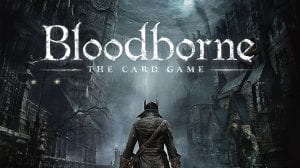Disclosure: Meeple Mountain received a free copy of this product in exchange for an honest, unbiased review. This review is not intended to be an endorsement.
Explore. Expand. Exploit. Exterminate. These four words represent the 4X genre and it’s been around for decades. Popularized by the computer game Sid Meier’s Civilization, this genre had numerous interpretations where a single session can last several hours. In the tabletop world, games like Twilight Imperium and Mega Civilization can easily hit the double-digit hour timeframe. There have been attempts by several designers to reduce the 4x genre into a mere two hours but to be honest, most of them are terrible. The Silver River is another jab at trying to make the two-hour window work and we are going to see if it will survive the journey.
Much like any other Space 4x game, your first decision is going to pick the race you want to play. This isn’t a licensed game and you can tell immediately the designers were huge fans of the computer game Master of Orion. These races are generic with generic names such as the “Cyborgs” and “Insectoids” with their unique abilities along with their Racial Wonders. Your task is simple: At the end of the four Ages, whoever has the most victory points wins.
Master Of Orion In A Box
After picking your race, you are going to do something innovative: You are going to pick how you score. Everyone starts with the same set of ten objective cards. In secret, you are going to pick five. Throughout the game, if you meet the conditions of your objective, you will reveal it to score points. Every objective card also has a way to score additional points at the end of the game as well. Besides your objectives, there are also three random public objectives.
This innovation to the formula is a marriage between theme and mechanisms. From a mechanical standpoint, it allows the players to pick how they want to play the game in true sandbox fashion. Since these objectives are secret and have a major influence on how the players will perform their actions, it also means there is some gameplay variety outside of race selection. In terms of theme, you are emotionally invested since you picked the agenda for your civilization much like a politician and you decide what role to take in this galactic community. Unlike politicians in real life, you do need to keep your promises to win.

Once that has been done and you positioned your four starting fleets, then we begin the game with production. You will get your production cubes from various sources such as the population on your planets, trade stations, political titles, and nebulas. Most of these cubes will end up in the Raw Production space on your production board. Afterward, everyone will put a cardboard shield in front of them and decide in secret how to assign their Raw Production cubes. There are four areas to put them in: Civilization, Military, Technology, and Political. Think of this phase as budgeting for your civilization for the round and you will be spending these cubes to do various actions.
Simple Steps, Big Plans
At first glance, this might sound straightforward. All you have to do is put them as equal as possible so you can do everything, right? Wrong. To truly excel in one area and be a noteworthy threat, you need to spend a good portion of your cubes in a particular spot or two. Here’s one example: In the First Age, you have five population cubes plus a starting bonus of 8 cubes, therefore 13 cubes in total. If you want to have a good head start in Technology, you will need to spend 4 to 5 Technology cubes. That’s almost half your budget, yet you have 3 other spots to worry about. These sacrifices mean you will never make the perfect empire machine thus forcing you to adapt to your crafted weaknesses.
With the combination of objectives and the production system, you have complete control of your empire’s destiny. You choose both the strengths and weaknesses based on how you budget. Unlike many other 4x games, there are no special resources to gather. This is a nice change of pace considering many other games before The Silver River often forced you to play in a certain way due to circumstances outside of your control. In this game, the players are given a set of tools to explore the game’s mechanisms instead of being put into a galactic choke hold.
After the production, you have the Action phase and this is where the game shows its fangs. When it is your turn, you are going to pick one of the four types of Production and do as many actions as you want. For example, you can pick Military production and spend one Military cube to move one of your fleets, then spend the rest of your cubes to add more ships into your fleets.
There are numerous actions you can take and I won’t go through everything. Instead, I’ll give a summary of what to expect.
Technology is exactly as you think it is. You spend cubes to grab either Civilization or Military tech starting from level 1 and heading your way to level 5. Technology gives you additional abilities or improves your other actions. Military is the movement of your fleets and building new ships which can lead to exploration or attacking other players. Civilization is your main way of creating trade stations, colonizing new planets, or populating a planet. Finally, Politics allow you to build Wonders, vote on Political titles, or draw Tactics cards.

Putting It All Together
This all sounds good but there is one more mechanism that glues all of these features together: Domestic Investments. When you pass, you move a cube on one of the four tracks and gain whatever production it states. You can no longer do any more actions, but each time your turn comes up, you move another space on a track and gain more production. At the end of the game, for each track you are furthest ahead, you earn victory points. You also earn victory points if you have a cube on all four tracks.
This mixture of spending as many cubes as you can on your turn and Domestic Investments forces this theme of being efficient with your turns. Like a good flirt, there is some pushing and pulling on your decision making. You can easily spend as much you like on your turn, but you won’t be able to respond to other players’ actions if you pass early. Take too much time and you are giving players free production for the next age as well as free victory points.
All of this sounds great and dandy, but I wish the rule book made it easier to learn. I’ll even go so far as to say The Silver River is the perfect example for aspiring designers to get editors and blind testers for their games.
As someone who used to own an unreasonable collection of games by Fantasy Flight Games and AEG, I am used to terrible rulebooks. The Silver River’s rulebook is a confusing wordy mess that often misses important details such as the timing of your actions or edge cases.
Production Mess
One such example is the combat system. The combat system says players must declare their intentions such as running away or if they want to fight. However, it doesn’t state the timing of these declarations. I had to go to boardgamegeek, create a rule thread, and have one of the designers answer a question for me. I am grateful for the answer, but what they described to me wasn’t what I was reading in the book. Another example is Planetary Bombardment; is it a separate fleet activation to attack a planet, or can it be used in addition to fighting enemy fleets as part of a single activation? Again, nothing about this.
Production is another story altogether and the best word to describe it is inconsistent. The space monsters miniatures are nice while the fleets are flat cardboard pieces. There is a deluxe version with plastic fleet pieces but they are not miniatures; they are more like reinforced tiddlywinks including the glossy look. It’s better but it’s also weird to see it on the map. Speaking of the map, it isn’t the most interesting to look at but it is functional. The cardboard stock is worthy of praise though since they are so sturdy and thick that I can use them as an improvised self-defense weapon. Even though I try to avoid the discussion of the artwork in games, I can’t ignore how good it looks here and I only wish there was more of it.
Despite how ugly components are and how messy the rule book is, I was sold on this one. Maybe it’s my bias talking here, but I am getting tired of this trend of heavy games with complicated rule sets to do basic tasks. The Silver River ignores this by creating a simplified system where it’s easy to navigate while supplying you with interesting choices. It is no longer a game of “can I do this strategy” and more along the lines of “should I do this strategy?”
Since the system is far easier to engage in, this also means the players will be competing with each other instead of wrestling with complicated mechanisms. When it comes to player interactions, there are numerous ways players can engage with each other.
This is a game about expanding space empires so we are going to have to talk about combat. Combat is simple: Roll dice. Yes, that’s it. You roll to hit like a 90s board game and you roll a die for each ship in your fleet. You don’t control the hits in combat, but you control everything else surrounding it. Since you can have only four fleets and each of those fleets have a different number of ships, positioning and logistics play a huge role here. You influence the “to hit” part since if you research military technology, you can improve your chances to hit therefore forcing you to decide how much you want to invest in your military. I prefer this system over the weird rock-paper-scissors or auctions that tends to be a trend in deterministic games as it doesn’t kill the pace.
More Than Just Combat
What if combat wasn’t your thing? The game also provides other avenues. You can vote on Political Titles or draw some Tactics cards. Political Titles are cards you vote in a hidden bid and they generate income as soon as you grab them as well as the start of each Age. You can also use your bid to vote for other players as well. Tactics are “take that” cards except they are far less evil than you think and they mimic the Espionage mechanisms you can take advantage of in computer games like Master of Orion. These two cards are additional ways to engage with your opponents
Another option is to explore. Exploring is very similar to Scythe’s Encounter system except done far better here. When you activate a fleet and move into an empty sector of space, you draw a card from the Explore deck and pick one out of three options. The difference is some options might help other players and give you victory points while some might introduce “side quest” cards to be shuffled into the Explore deck or give your exploring fleet an objective to complete for a reward. Other players can try to destroy your fleet to prevent you from finishing the objective.

There is also one unique feature: Space Monsters. As if the Master of Orion influence wasn’t enough for the races, The Silver River has a monster chilling in the middle of the universe. There are various types of monsters with their abilities and as the monster gets stronger with each defeat, they also gain “monster ability” cards that can power them up randomly in each fight. The best part about this is the players can cooperate to fight the monster together and they all get rewarded for participating if they win.
All these features manage to conjure an experience filled with interesting choices within a reasonable time frame while creating fantastic yet dumb stories. In my first game, I was the Insectoids and I’ve managed to litter the galaxy with my continuous breeding population. We had the best social programs and arts in the universe, but we were also extremely weak in the military. To put it bluntly, we were space Canada with a higher population density. In my third game, I played Insectoids again. This time I was a highly technological race mastering both civilization and military while performing military blockades against my neighbors. Of course, this wasn’t done cleanly since we enslaved a neutral race and decided to take possession of an evil relic during one of our exploration missions. Same race, completely different approach.
With all the wackiness aside, I was very impressed with this one. The 4X genre is often associated with complication and game length. The Silver River manages to remove both of these elements while still maintaining the decision making and player interactions one expects from a 4x game. You still make grand decisions for your empire and pursue your goals for technology, military, politics, and civilization. It’s executed in a far more engaging and digestible format with player-driven conflict. As for player scaling, I did play this with 2, 3, and 4 players and I was impressed by how well it worked in all player counts. You can play 5 players with the Deluxe edition, but I feel it suffers from “Stonemaier syndrome” where it can technically work but it really shouldn’t as the map would be too tight and the downtime would be too long. I highly recommend giving this a shot despite the shoddy rulebook and components as it does bring innovative changes to the 4x genre without comprising the expectations. Also, you fight space slugs.











Add Comment